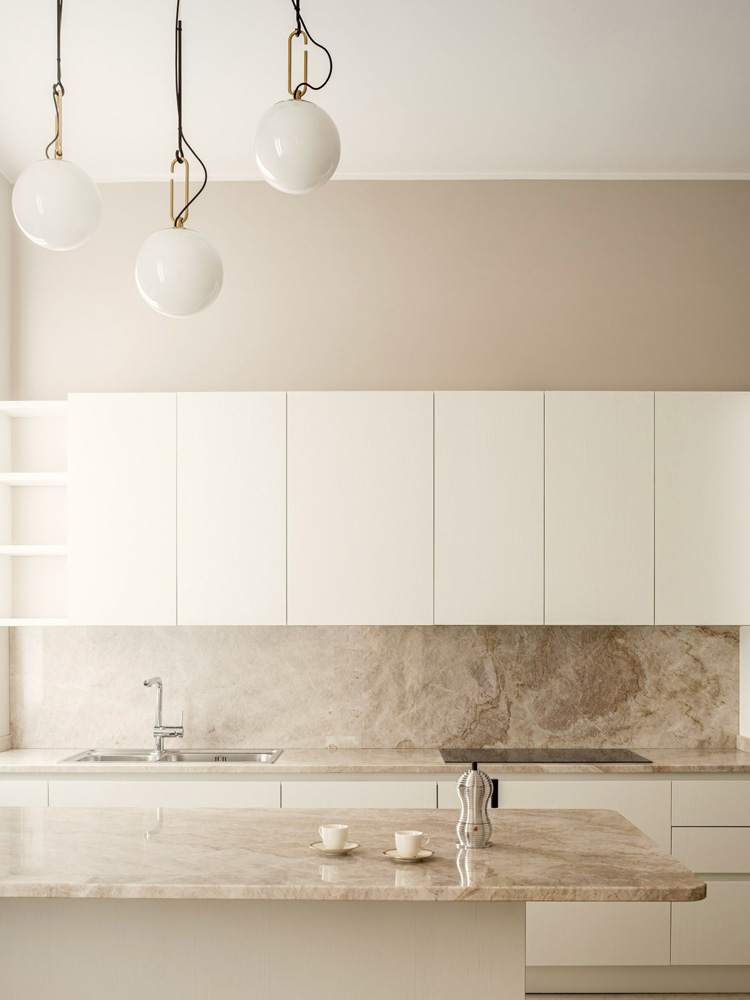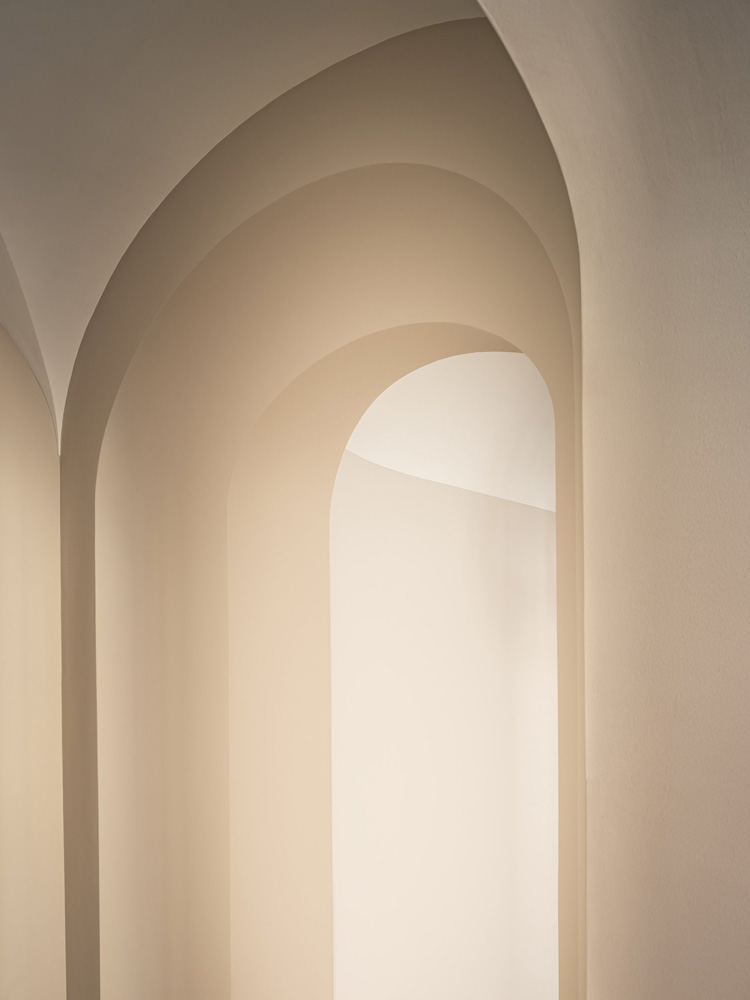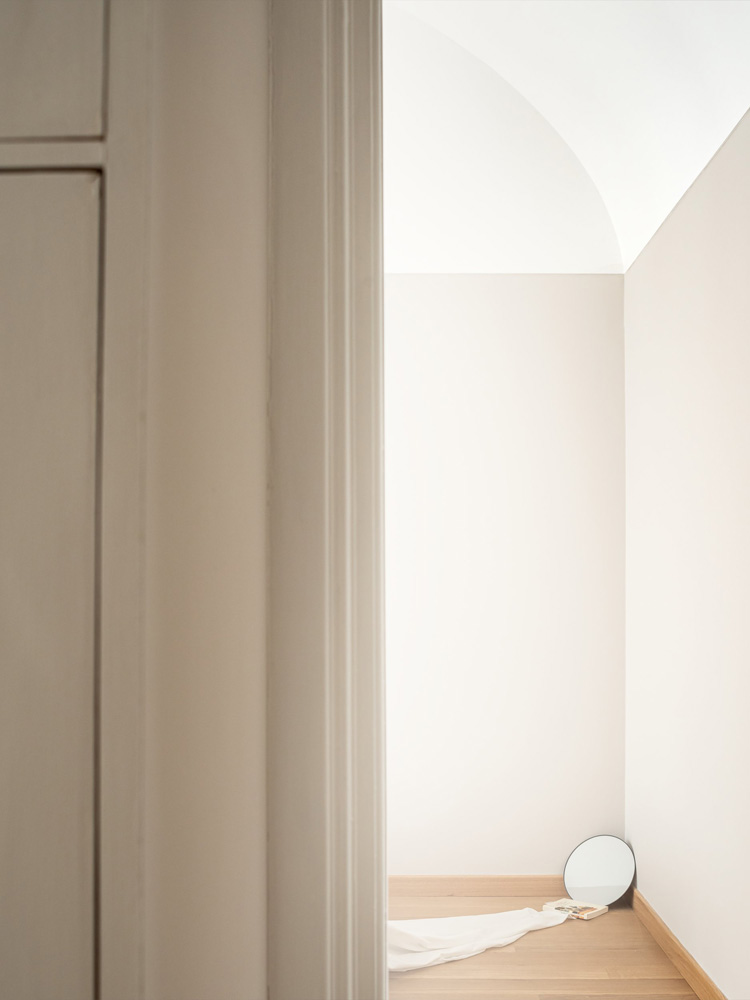Questo interno milanese ha rivelato fin da subito tutto il fascino del progetto sviluppato a metà degli anni ’90 dall’ing Giacomo Mantegazza, noto, insieme al padre, per essere autore di alcune delle più belle ville sul lago di Como. In questo palazzo storico nel centro di Milano, l’ingegnere aveva creato un interno avvolgente, progettando in sezione una sequenza di spazi modulati dai controsoffitti a volta, dagli archi e dai ribassamenti alternati, in dialogo con le finiture tipiche degli anni ’30 dello stabile, con i suoi decori pittorici e i pavimenti a cementine e seminati.

Foto: Andrea Ceriani.

Partendo quindi da una spazialità molto connotata, il nostro progetto si è inserito reinterpretando gli spazi della casa. La netta suddivisione tra zona di servizio per il personale e zona nobile non rispecchiava infatti le esigenze di vita aperta e condivisa di una giovane coppia di oggi. I vecchi ambienti adibiti a zona cottura e stireria sono stati trasformati in un’unica ampia cucina con penisola e area pranzo, per abbracciare un’idea di convivialità anche dei momenti di preparazione dei cibi.

Foto: Andrea Ceriani.

L’asse che collega la cucina alla zona living è stato aperto ampliando la porta dell’ex-stireria per connettere anche visivamente queste due ali dell’appartamento. La rimozione puntuale di alcuni arredi fissi e la rimodulazione del controsoffitto hanno esaltato il volume del soggiorno con annessa la sala da pranzo ovale. La zona notte ha mantenuto la sua proporzione, così come i bagni, completamente ripensati nei materiali.

Pianta.

Gres con le venature della pietra naturale, nelle nuance del beige e del grigio, si accompagnano al legno rovere del nuovo parquet e al tono tortora scelto per le pareti fino all’imposta di volte e archi.
Il progetto dell’illuminazione esalta le geometrie avvolgenti delle stanze, creando contrasti tra il nuovo e il preesistente.

Foto: Andrea Ceriani.


Flat RU10, Milan, Italy
This Milanese interior immediately revealed all the grace of the project developed in the mid-1950s by the engineer Giacomo Mantegazza, known, together with his father, for being the author of some of the most beautiful villas on Lake Como. In this historic building in the centre of Milan, the engineer had created an elegant interior, by designing in section a sequence of spaces modulated by vaulted false ceilings, arches and alternating lowerings, in dialogue with the typical 1930s finishes of the building, with its pictorial decorations and cementine and seminato floors.

Foto: Andrea Ceriani.

Therefore, starting from a very distinctive spatiality, our project has reinterpreted the distribution of the apartment. The clear division between the service area for the housemaid and the noble area did not reflect the needs of a young couple today. The old rooms used for cooking and ironing have been transformed into a single spacious kitchen with peninsula and dining area, to embrace a contemporary idea of conviviality.

Foto: Andrea Ceriani.
The axis that connects the kitchen to the living area has been opened by widening the door of the former ironing room to visually connect these two wings of the apartment. The punctual removal of some fixed furniture and the remodulation of the false ceiling have enhanced the volume of the living room connected with the oval dining room. The sleeping area has maintained its proportions, as have the bathrooms, with completely redesigned materials.

Foto: Andrea Ceriani.

Grès tiles with veins of natural stone, in nuances of beige and grey, are combined with the oak wood of the new parquet and the dove grey tone chosen for the walls up to the springers of the vaults and arches.
The lighting project enhances the geometries of the rooms, creating contrasts between the new and the pre-existing.

Foto: Andrea Ceriani.








